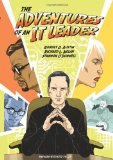Scene: I was CTO at a high-traffic social networking site, circa ten years ago. It was one of those times when our site got crushed by unexpected sudden volume, due to being mentioned in an article in a prominent newspaper. My infrastructure manager walked into my office the next morning, ashen-faced. “We’re gonna get killed tomorrow unless we add ten front-end servers to our prod environment,” he proclaimed. A fairly common IT reaction: absolute, adamant, ominous.
Ten new servers? That was a nice round pulled-from-thin-air number, obviously, and by the time we talked through it, we actually found other, more practical, more feasible ways first to estimate and then handle the increased load. But to the infrastructure guy as he walked in, the situation was both dire and absolute, and he saw only one solution that should even be considered.
So now let’s look at another data point on IT psychology. Take the latest iPhone brouhaha: the quick “cracking” of the iPhone 5s Touch ID fingerprint scanning technology. Amazingly, Touch ID has turned out to be less than perfect. Someone with $1,000 of equipment, plus lots of time, motivation, and patience, could conceivably fool the scanner. Meanwhile, what gets lost in the outrage over this turn of events is the notion that the technology might indeed be “good enough”, or “better than the alternative”. We forget the simple fact that the technology is primarily oriented to people who currently don’t use passcodes at all, and that it vastly improves general security for those sorts of users. As one article pointed out, “The point of any security system isn’t to be unbreakable – there’s no such thing – but to be fit for purpose.”
My larger point: if there’s a problem or a difficulty or even a nuance to a particular approach’s applicability, a common IT practitioner’s instant reaction is that the approach or practice is absolute junk and should be completely avoided.
Similarly, we often reject fundamental improvements to a situation, simply because they are not perfect. We let “best get in the way of better.” On this general theme, an amusing tweet crossed my screen the other day. @rands wrote, “I find when an engineer says, ‘Less than ideal’, they often mean ‘Complete fucking catastrophe.’” I laughed at this, of course, but partly because I’ve more often experienced that scenario in reverse: an engineer deciding, and then loudly and profanely proclaiming, that a situation was nothing short of a complete disaster, simply because it was less than ideal.



